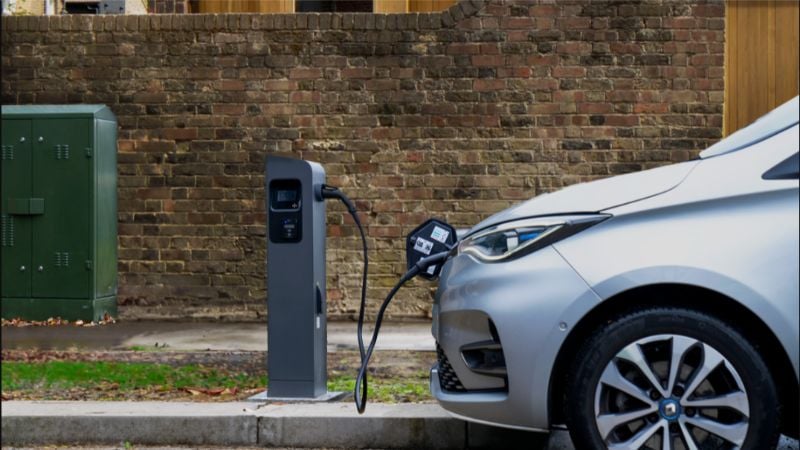Retrofitting Forgotten Street Cabinets: BT’s EV Charging Tactic
BT Group wants to turn unused electrical street cabinets into electric vehicle charging stations.
As electric vehicle (EV) adoption increases, expanding charging infrastructure becomes crucial. In the U.K., BT Group plans to repurpose street cabinets, once housing wires and cables for broadcast and phones, to unlock unforeseen EV charging opportunities.
With the first cabinet transformation around the corner, what could the BT EV charging plan signify for the future of accessible chargers?
Street cabinet EV charger. Image used courtesy of BT Group
The EV Infrasturcture Plan
BT will retrofit about 60,000 abandoned street cabinets to provide space for EV chargers. The cabinets already contain power connectivity options, eliminating the need to fund, manufacture, and install new tech. BT plans to use renewable energy sources.
Currently, only about 54,000 chargers are available to EV owners in the U.K. The national goal is to increase the number to 300,000 by 2030.
The pilot program will determine whether the wiring equipment within the street cabinets might be repurposed on a larger scale. BT’s research shows 78% of traditional car owners are reluctant to transition to EVs because of insufficient charging stations.
The program will also promote the U.K.’s decarbonization goals.
BT’s efforts will be valuable to governments and other companies as they dive into more productive engineering upgrades amid grid modernization and the transition to renewable energy. Companies like BT will assist in convincing more influential bodies to take decisive action and motivating corporate and citizen buy-in for EVs and green energy.
Challenges to the EV Infrastructure Plan
BT will face the most significant resistance from governments. Navigating civil planning considerations, zoning, building codes, permits, and other administrative hurdles may stall progress despite site feasibility. Engineers must have equipment and electrical peripherals documentation ready to validate the process and receive funding.
Utility companies may also pose challenges for BT. Engineers negotiate which organizations have responsibilities for power generation and accessibility. Opponents may disrupt implementation regardless of the cabinets’ cost-effectiveness and integrability to renewable energy.
Collaboration among automakers, engineers, and utility companies is required for comprehensive transformation.
BT may also face pushback from citizens, as many cabinets could disrupt street parking and road access until workers finish the upgrades. Drivers will also need time to learn how to navigate curbsides, roads, and interfaces for these novel technologies. The learning curve may cause some driver distress, but it is navigable if engineers forge educational resources and intuitive tech.
What’s Next for BT’s EV Charging Plan?
After BT engineers finish deploying the repurposed street cabinets, they will consider adding more charging points within the cabinets. The critical infrastructure recycles copper and broadband equipment in place of fiber. The cabinets may also require AC and DC potential to upgrade charging speeds.
Engineers must also consider how EV drivers engage with the street cabinet chargers and which interfaces they might use. Software engineers must curate a secure, customized, seamless experience to perpetuate EV adoption.
Types of EV charging plugs. Image used courtesy of the Department of Energy
BT could incorporate safety measures like RFID authentication or craft local databases to help drivers find operable charging sites in their area. Once BT finalizes the initial rollout, engineers must redistribute resources to perfect the digital customer experience.
Additionally, engineers will need to defend these charging points. High-test DC fuses for semiconductors, high voltage suppressors, and other equipment are necessary to protect and maintain them for longevity. Engineers must also install and make systems compatible with remote infrastructure management tools to monitor for wear and tear, natural disasters, misuse, or vandalism.
Unveiling Hidden Avenues for EV Charging
Engineers involved in this project must think outside the boundaries of this project to further global climate objectives. What other street furniture and hidden infrastructure can be transformed? Their insights on power compatibility and site potential may dissolve even more barriers against the proliferation of innovative charging machinery.








